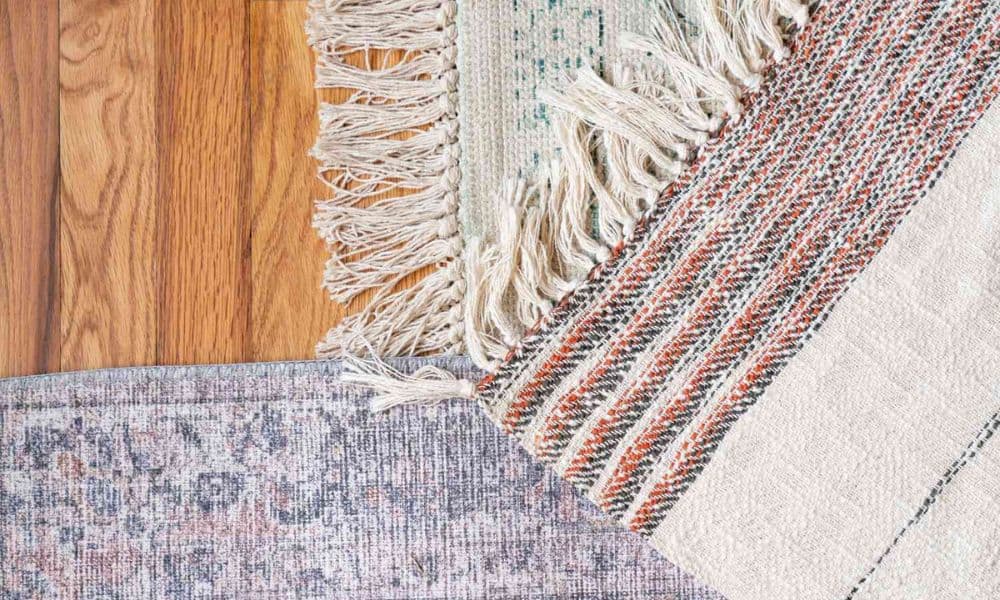The Magic of Hand-Knotted Rugs are simply the best artworks one could ever possess. Without a doubt, when it comes to carpets and rugs, handcrafted rugs are the “cherry on the top.” But do you believe that you are aware of everything there is to know about these stunning beauties? If not, Custom Rugs is here with a comprehensive guide on hand-knotted rugs and their varieties.
Types of Hand-Knotted Rugs
Based on the wool’s density and the amount of wool ply used in the yarn, there are two main categories for handmade carpets:
Flat woven rugs
These carpets are made using a basic cross-weaving technique, with horizontal and vertical threads weaving the designs. These carpets are reversible since the strands are simply interlaced and the back is free of knots. Stated differently, these rugs have the enormous advantage of being able to be used from both sides over stacked handmade rugs.
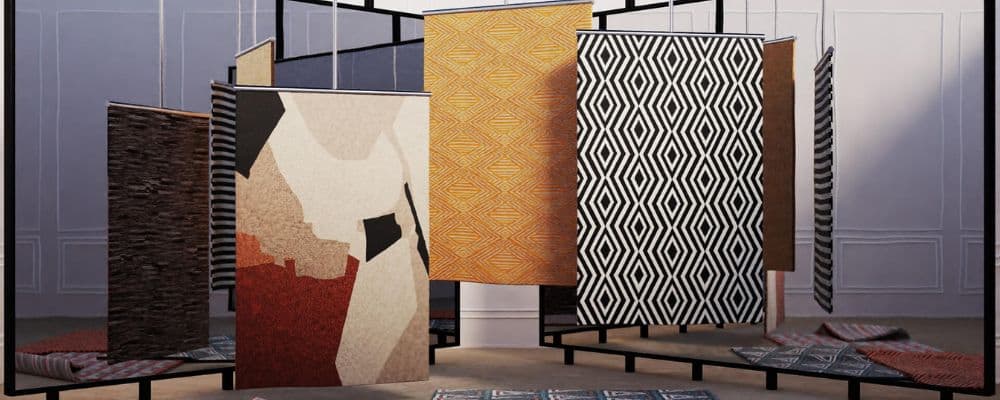
Here are a few types of flat-weave rugs:
- Kilim: The design of traditional Kilims is created by the weft strands, and the color of these strands is also the main color of the rug.
- Soumak: The Soumak rugs are plusher as compared to Kilims. Owing to their thick weaves that are formed by passing the weft strands over double strands of wraps, these rugs have a softer feel than other flat-weave rugs.
- Dhurry: A more casual type of flat-weave rugs, dhurry is commonly made of cotton yarn instead of wool.
Pilled Rug
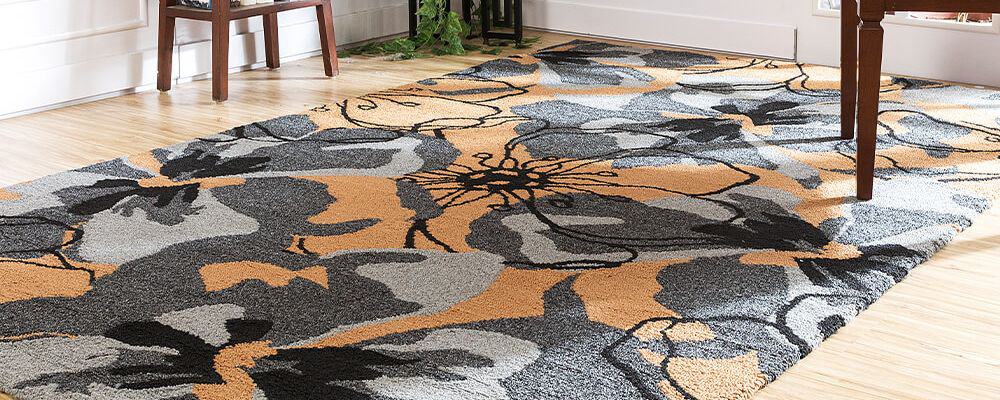
The wool knots are used to form the pattern on piled rugs are wrapped around a foundation. Because of the dense pile of yarn that is tied together, these rugs are well-known among rug and carpet enthusiasts for having a soft surface. These are a few examples of types:
- Rugs with Persian Weave: The most popular and highly prized kind of rugs are Persian weaves, which are composed of fine wool and give off an opulent impression due to their deep pile.
- Rugs Made in Nepal: Compared to traditional Persian rugs, this contemporary style of piled rug features more subdued designs. The majority of these rugs’ designs are abstract or have naturalistic elements.
- Sculptured Weave Rugs: Distinguished by their large knotted weaves and straightforward designs, these rugs have the thickest pile. When contrasting colors are used in the creation of a sculptured weave rug, patterns are created.
How Can You Tell if The Rug You Own is a Real Hand-Knotted Rug?
Look for The Back Side
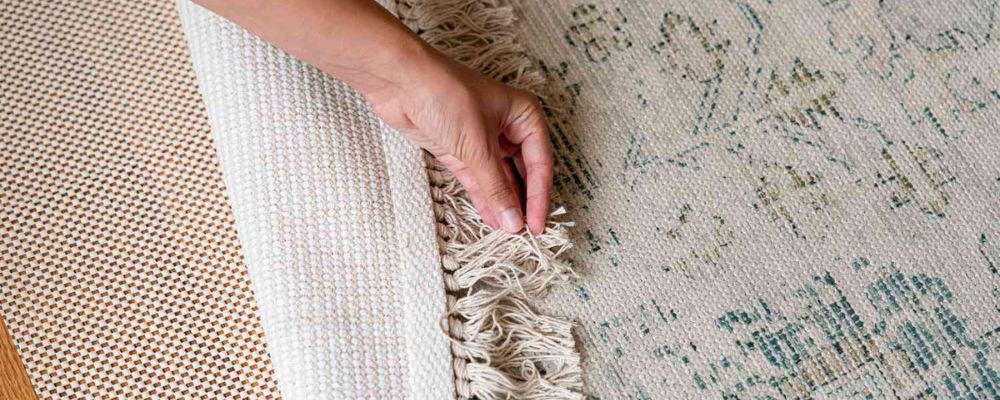
Conventional hand-knotted rugs lack any kind of backing. Comparative to machine-made rugs, which usually use a layer of latex to keep the tufts in place and a covering of canvas or fabric on top of the latex coating. The rug is not a genuine, traditional hand-knotted rug if it has a backing material.
Check the Knots
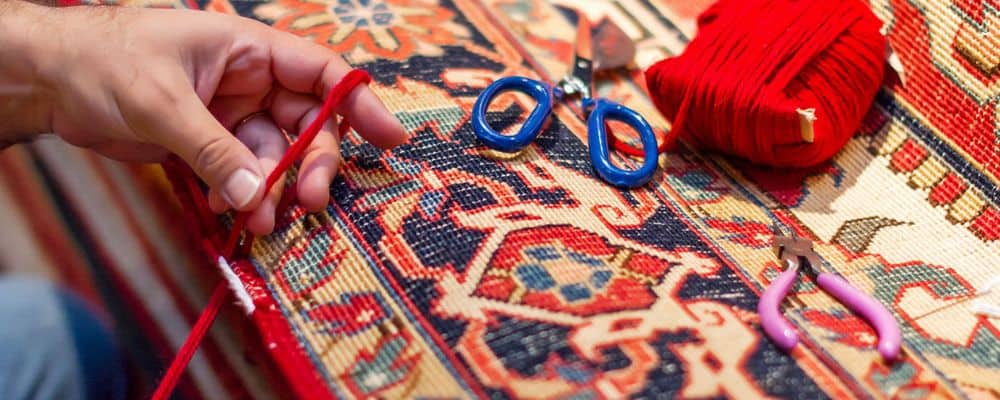
Because they are made by hand-Tufted, hand-knotted rugs also exhibit slightly uneven knots; in contrast to machine-made rugs, which have artificially created knots where the fibers are simply bonded to the foundation material of the rug with heat and high pressure, traditional hand-knotted rugs have extremely tight knots that are tied together closely.
Verify the Symmetry
You can easily tell if a rug is authentically hand-knotted by turning it over and closely inspecting the pile at the back of the rug. An authentic hand-knotted rug has a distinct back and front, with the plush front reflecting the same pattern and design as the front. The rug’s back design needs to match its front design exactly. The quality of the rug increases with the level of detail in the design at the back.
Why You Should Buy Hand-Knotted Rugs
A wise purchase for the house
Traditional hand-knotted rugs are the priciest kind of rug, but their exquisite beauty and long lifespan make them wise investments even though they are thought to be the most expensive kind.
Priceless Heirloom Items
The Magic of Hand-Knotted Rugs that are traditional in style are highly valued collectibles that can be handed down through the generations. Traditional hand-knotted rugs have been shown to withstand the test of time and can endure for decades or even a lifetime if they are properly cared for and maintained.
- Anime Rugs
- Modern Rugs
- Cartoon Rugs
- Outdoor Rugs
Timeless
An antique, classic, and timeless interior design piece that never goes out of style is a traditional hand-knotted rug. Any predominant style in your home, whether traditional, contemporary, or modern, can be effortlessly adapted by a traditional hand-knotted rug.
Unique
You can be sure that every hand-knotted rug is one-of-a-kind. Traditional hand-knotted rugs display reflections of the weaver’s artistic design, in contrast to mass-produced rugs that frequently come in similar patterns. Hand-knotted rugs are exquisite pieces of art deserving of the title of masterpieces due to the meticulous care and attention to detail that goes into their design, construction, and detailing.
Durable
A hand-knotted rug’s fibers are carefully woven into one another and securely tied in place, maintaining the rug’s high quality throughout construction. Unlike machine-made rugs that are prone to ripping over time, they are more difficult to pull out from the rug’s foundation. Traditional hand-knotted rugs have great durability due to their use of natural materials in addition to their exquisite knotting technique.
Types of Knots in Hand-Knotted Rugs
For hand-knotted rugs, artisans prefer to use one of two fundamental knot types. Handmade rugs of superior quality are adorned with the Senneh and Ghiordes knots. Although it is not preferred, the third type, also referred to as the Jufti knot, is utilized. Superior quality rugs do not employ this technique because it is regarded as inferior.
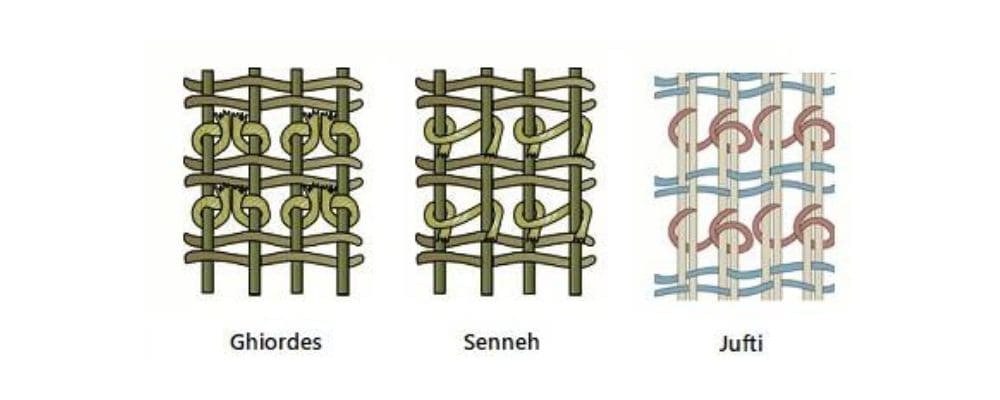
Senneh Knot
The Senneh knot, also referred to as the Persian knot, finds widespread use in various regions for Iran, India, Pakistan, Afghanistan, and Asia.
Another name for them is double knots. Persian knots have an uneven construction. The rugs with intricate details are made with these asymmetrical knots.
Ghiordes Knot
This type of knot has a symmetrical pattern and is the only one available. The use of symmetrical knots results in well-built, safe piles.
Jufti Knot
This knot is not as well-liked. This knot is typically utilized in inexpensive rugs that are used frequently. Compared to other knot types, these knots require less time and are not overly dense. The exquisite weaving that characterizes fine handmade rugs is not produced by this. The rugs made of Jufti knots are not very strong and durable, which is why they are not rated among the superior quality rugs.
If one of our ready-to-buy options is a great fit for your house, you can purchase it. Explore our selection of more than 2000 ready-to-wear hand-knotted carpets, which are ideal for use in living rooms, bedrooms, hallways, and kid’s rooms.
You can design your carpet in custom orders. Experiment with size, shape, color, and design. Create a beautifully personalized Indian hand-knotted carpet for your home that will go with everything in it. We at Custom Rugs will give you everything to make your custom rug emit that vibe and personality that you desire.
Contact us at +86 13613866590 now to personalize a hand-knotted carpet.

